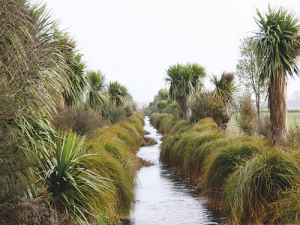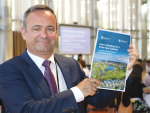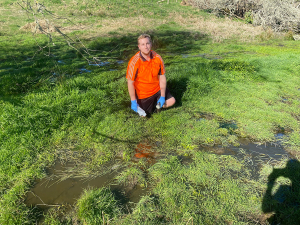DairyNZ is working on several projects designed to help farmers to do a better, more efficient and cost effective job in riparian planting, with the goal of improving water quality.
DairyNZ freshwater scientist Aslan Wright-Stow says the website has a tool called Riparian Planner that helps farmers map the waterways on their farm to find the best location for riparian planting.
It includes a planting list of the best plants, what suits individual regions, where to plant these and fencing options. A cost calculator is included.
“People are getting confused because there is a lot going on, so we are keen to support farmers. Riparian Planner eases the task, offering options on where to start, how wide and how long a riparian buffer could be. It’s designed to cater for those challenges. There is a lot negative stuff in the media about riparian planting and we want to show people it works.”
Wright-Stow says the dairy industry is leading the primary sector in riparian planting, and DairyNZ is working with NIWA to improve the quality of information and advice to all farmers and people in urban areas.
An ambitious project – National Riparian Restoration Database – is underway to identify all riparian projects nationwide from about 60 years to now. While the dairy industry has good knowledge of what its farmers have done, the same can’t be said in other primary sectors and the urban environment.
NIWA and DairyNZ are asking farmers to go to www.riparian.niwa.co.nz to record their riparian work.
Wright-Stow says they know a lot of riparian work was done in the 1960s to mitigate problems in various regions, including around hydro-electric power stations. And much work has been done in recent years.
The overall benefits of this are well known but now they need better data to improve decisionmaking.
“There are still important, outstanding questions such as, what is the optimal riparian buffer width? how long should a buffer be to improve water quality if the landscape is pasture? and should you start at the top or bottom of a catchment?
“This project is to get a handle on the number of riparian projects and then bring in science to come up with answers,” he says.
Wright-Stow expects it may take 12 - 18 months to get a nearly complete picture of NZ’s riparian projects. Then they will probably select 50 plus sites and study their water quality.
A key to this will be selecting sites based on regions, different types of catchments and the length and width of buffer zones, and then selecting plantings that range from new ones back to those done 60 years ago; also urban and rural sites.
“By doing that we can develop a broader picture of what and where it works most efficiently and we are aiming to get optimisation as a management tool,” he says.
Once the 50 or so sites have been selected, Wright-Stow says groups, individuals and ‘citizen’ scientists will be asked to monitor the sites and feed information into the national database for 12 - 18 months. NIWA will provide the equipment and training.
The ultimate goal of the project is to have top quality data that can be developed into tools to make future riparian plantings -- on dairy, sheep and beef farms or in urban areas -- more cost effective and to improve water quality.











